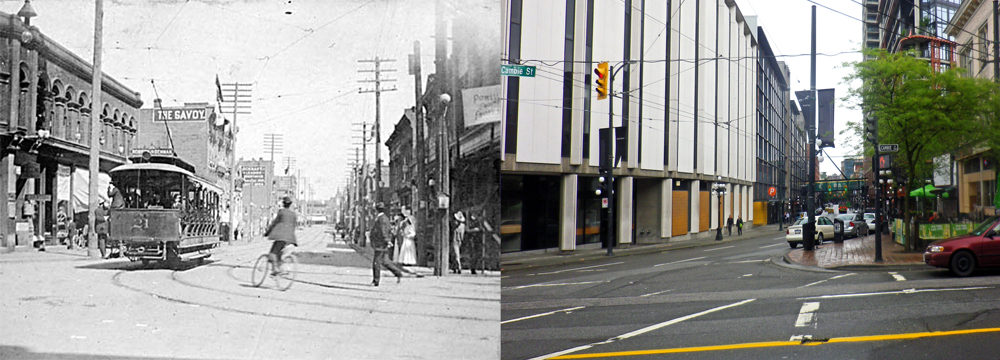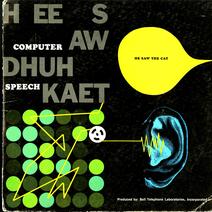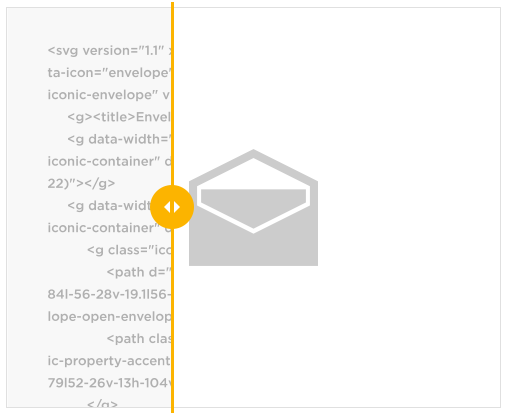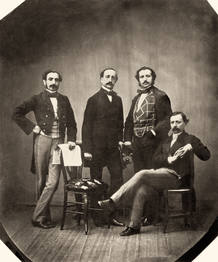When Robert “Bob” Kiley took over as Chief Executive Officer of the New York City Metropolitan Transportation Authority his mission was to revive the City’s crime-ridden, dilapidated subway system where ridership had fallen to levels not seen since 1918. By the time he delivered this lecture at the New York Public Library’s Celeste Bartos Forum in February, 1988, Kiley was five years into the job and well on the way to guiding the City’s subways back from the dark days of the late 1970’s when every car in the subway fleet was covered with graffiti and trains routinely broke down.
Kiley, who before coming to New York led the Boston subway system back from a fiscal abyss, acknowledges that urban dwellers will always have an uneasy relationship with their underground trains. “The word ‘underground’ inspires fear,” says Kiley, noting that it summons thoughts of the “realm of Hades.” But the transit executive says there is nothing more important for modern cities than maintaining its public infrastructure, particularly the subway systems, which transmit the life blood of a metropolis — its people.
Kiley points out that it took New York City — the leading industrial center in the Western Hemisphere after the Civil War — a longer time than many of the world’s great cities to develop a subway system. While technology existed at the time to operate trains under the streets of New York, Kiley says political corruption squelched civic improvements.
For much of the second half of the 19th Century, William Marcy “Boss” Tweed controlled the political process in New York; he favored the interests of businesses that ran horse-drawn buses and thwarted subway development legislation. Kiley says that New York became “the most inconveniently arranged modern city in the world.” Indeed, in 1873 workers were spending a sixth of their day trying to get to their jobs. Only then did Tweed come out in favor of privately funded elevated train construction for the City — a boondoggle. This form of transit mainly served to further enrich the notorious financier, Jay Gould, the politically appointed Rapid Transit Commissioner and owner of these urban steam-powered railroads. As Kiley describes with disgust, the elevated trains covered the streets and the people with soot and cinders and did little to ease urban congestion.
In 1894, through the efforts of business leaders and the press, a new Rapid Transit Commission was formed, and a method of funding devised: City bonds were issued to private businesses for the construction of an electric powered subway system.
The former MTA CEO recounts how, in October 1904, the first subway line, privately owned by the Interborough Rapid Transit Company or IRT, rolled down the tracks underneath Broadway from City Hall to 145th Street. Soon it was carrying 25,000 people a day. Kiley extolls this moment which “finally conferred order where there was almost none.” Powered by electricity, with stations decorated in ornate terra cotta and tracks just below the street surface, the new subway was, he explains “the very best that 19th Century technology could offer.”
However, as New York City rolled through the 20th Century, the demands on the subway system soon exceeded its capacity. When the IRT grew too crowded in 1907, Kiley wryly notes that the City Club complained: “we do not get a civilized ride for our five cents — the trains are like cattle cars.” Other subway lines were developed, such as the privately owned Brooklyn-Manhattan Transit Company or BMT. But New Yorkers remained dissatisfied. Kiley says Mayor John Hylan, who presided over the City in the early 1920’s, enhanced his populist creds by campaigning against any attempt to raise the five-cent fare.
Kiley blames the political aversion to raising the nickel fare – it was in place from 1881 to 1948 – for restricting capital improvements on the system and causing fiscal woes for the IRT and BMT. The City had to take over those private lines in 1940, combining them with the Independent City-Owned Rapid Transit Railroad, or IND, which started in 1925 at the end of Hylan’s last term of office.
Kiley adeptly traces the decline and gradual renaissance of the City’s subways from 1948, when subway ridership reached its zenith of 2 billion riders, to 1988 when it had emerged from an almost mortal dysfunction. Statistics play an inevitable and telling role in this account. Necessary fare hikes, starting modestly with five-cent increments until the fare was doubled to a half dollar in 1977, corresponded with the loss of hundreds of millions of riders per year.
When Kiley took over the MTA in the early 80’s, the supervisory force had been depleted by retirements. There were just 300 managers for 50,000 employees. A critical train car repair shop had just one manager for 1100 workers. Train tracks that were supposed to be inspected twice weekly were so neglected that half the trains could be out of service at any one time.
Kiley describes how he moved the MTA from triage to a system of accountability, in part by jettisoning civil service and collective bargaining rules, to hire a new cadre of managers. At the time he delivered this lecture, New York subway tracks were being regularly inspected under the supervision of 177 managers rather than just seven, graffiti had been removed from 85% of the cars, crime on the trains had declined significantly and ridership was returning to levels that existed before the City’s fiscal crisis of the 1970’s.
Bob Kiley, who later went on to manage London’s underground transit system, believes that well-maintained, publicly-funded infrastructure benefits business and maintains the life and growth of society. This well-regarded transit executive believes that New York’s subway system is its greatest public asset, albeit a fragile one, ever dependent upon a political will to continue providing capital for its sustained development into the 21st Century.
__________________________________________
This talk originally aired on WNYC as part of the Voices of the New York Public Library series of lectures from the NYPL’s Celeste Bartos Forum on June 27, 1993.






![[Female acrobats on trapezes at circus | Library of Congress ]](http://hangingtogether.org/wp-content/uploads/2014/10/3g02091r-300x238.jpg)























![Ward: “Wheat-pit in Harpoot. Pile of wheat in centre taken in market at Harpoot.” Chambers: It was at Erzroom that I received my first near view of the Turkish situation. The [Russo-Turkish War of 1877-78] had left the country almost desolate, wheat was to be found but the price was exorbitant, and famine conditions resulted from the apathy and inefficiency of the administration… One of my first journeys was through the villages over which the war had swept. We visited villages inhabited by Turks, Armenians, Koords, Persians, Yezidees. There are no rural districts as in the Occident. All the people of a vicinage group together and form a village. I was impressed by what I saw of the modes of life, ranging in the towns and larger villages from well-built comfortable houses with an upper story, to the half underground structures with conical mud roofs that seemed to rise from the ground.”](https://consecratedeminence.files.wordpress.com/2014/09/ward-earl-album-wheat-market.jpg?w=583&h=336)


![Ward’s journal: “Constantinople. Monday, April 19 [1909]. Upon arrival found Mr. Peet away and Mrs. Peet quite anxious as to danger of massacre & looting. Terrible news from Adana, 2 Am. Missionaries killed, Armenians massacred. Drs. Greene, Herrick, Mr. Peet, Carson & Mrs. Mardin consulted about sending relief.”](https://consecratedeminence.files.wordpress.com/2014/09/chambers-adana-after-1909-massacre1.jpg?w=595&h=381)





